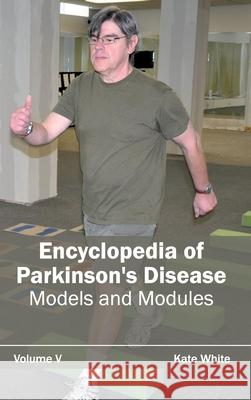Encyclopedia of Parkinson's Disease: Volume V (Models and Modules) » książka
Encyclopedia of Parkinson's Disease: Volume V (Models and Modules)
ISBN-13: 9781632411938 / Angielski / Twarda / 2015 / 202 str.
Encyclopedia of Parkinson's Disease: Volume V (Models and Modules)
ISBN-13: 9781632411938 / Angielski / Twarda / 2015 / 202 str.
(netto: 477,25 VAT: 5%)
Najniższa cena z 30 dni: 469,72 zł
ok. 13-18 dni roboczych.
Darmowa dostawa!
This book on Parkinson's disease (PD) elaborates the state-of-the-art research in the field. PD is caused mainly due to the death of dopaminergic neurons in the substantia nigra. Recent PD medications treat symptoms; though none decrease the rate of dopaminergic neuron degeneration. The primary problem in development of neuroprotective therapies is a restricted comprehension of the crucial molecular mechanisms that incite neurodegeneration. The discovery of PD genes has led to the hypothesis that dysfunction of the ubiquitin-proteasome pathway and misfolding of proteins are both critical to pathogenesis of the disease. Oxidative stress and mitochondrial dysfunction, earlier labeled as responsible in the neurodegeneration of this disease may also act in part by causing the collection of misfolded proteins, along with the production of other harmful events in dopaminergic neurons. PD models based on the manipulation of PD genes should prove crucial in explaining significant characteristics of the disease, like selective vulnerability of substantia nigra dopaminergic neurons to the degenerative process. This book includes some important topics such as update on PD, oxidative stress-damage, PD & immune system and membrane binding & its implications.
This book on Parkinsons disease (PD) elaborates the state-of-the-art research in the field. PD is caused mainly due to the death of dopaminergic neurons in the substantia nigra. Recent PD medications treat symptoms; though none decrease the rate of dopaminergic neuron degeneration. The primary problem in development of neuroprotective therapies is a restricted comprehension of the crucial molecular mechanisms that incite neurodegeneration. The discovery of PD genes has led to the hypothesis that dysfunction of the ubiquitin-proteasome pathway and misfolding of proteins are both critical to pathogenesis of the disease. Oxidative stress and mitochondrial dysfunction, earlier labeled as responsible in the neurodegeneration of this disease may also act in part by causing the collection of misfolded proteins, along with the production of other harmful events in dopaminergic neurons. PD models based on the manipulation of PD genes should prove crucial in explaining significant characteristics of the disease, like selective vulnerability of substantia nigra dopaminergic neurons to the degenerative process. This book includes some important topics such as update on PD, oxidative stress-damage, PD & immune system and membrane binding & its implications.











